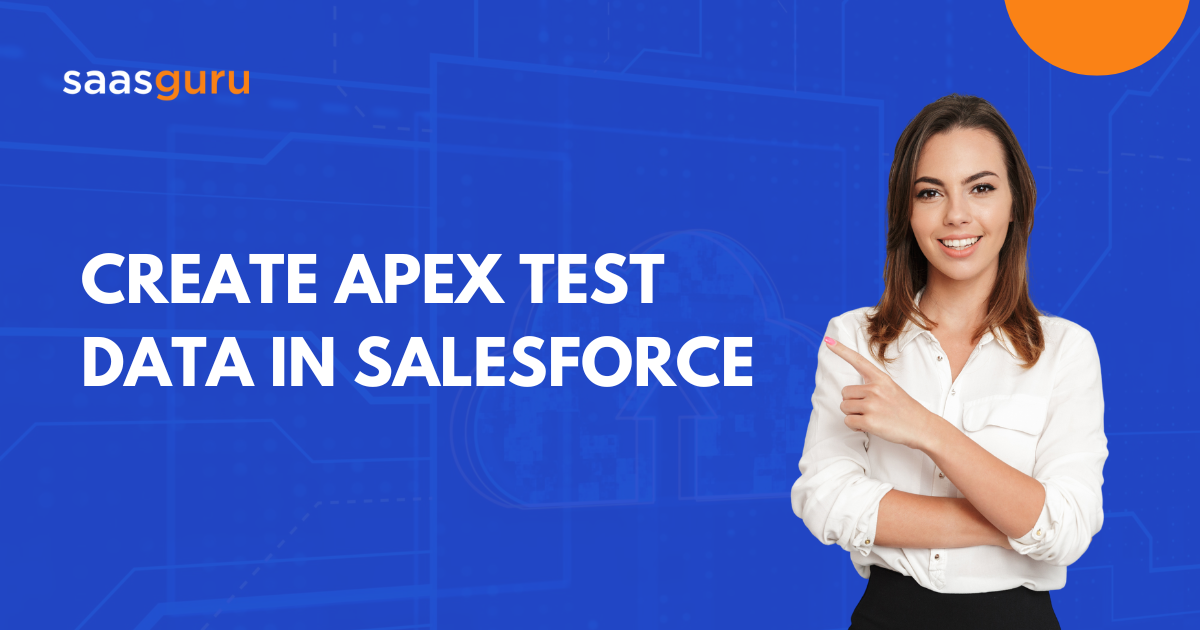Many businesses struggle to integrate their data landscape. Salesforce Integration Architects are the Jedi of this data dilemma, crafting seamless connections and unlocking sky-high efficiency. Earning the certification demonstrates your ability to create seamless data flows that unlock the true potential of the Salesforce platform for businesses.
This comprehensive guide explores:
- Benefits of the Salesforce Integration Architect Certification
- Exam Details
- Key Topics and Weightage
- Essential Resources
- Exam Preparation Strategies
- Salary and Job Market Outlook for Salesforce Integration Architects
- Frequently Asked Questions (FAQs)
Why Pursue the Salesforce Integration Architect Certification?
Earning the Salesforce Integration Architect certification goes beyond simply validating your technical expertise. It unlocks a multitude of benefits for both your professional development and career prospects:
Enhanced Credibility
The certification demonstrates your in-depth knowledge of Salesforce integration best practices, making you a highly sought-after professional in the Salesforce ecosystem.
Career Advancement
This credential positions you as a valuable asset within organizations heavily reliant on Salesforce and external system integrations. It opens doors to leadership roles in integration projects and integration architecture teams.
Increased Earning Potential
Certified Salesforce Integration Architects typically command higher salaries compared to their non-certified counterparts. The demand for skilled integration professionals continues to grow, making this certification a valuable investment in your earning potential.
Expanded Skillset
The preparation process for the exam broadens your knowledge of various integration patterns, tools, and methodologies. This expanded skillset equips you to tackle complex integration challenges and design robust solutions.
Staying Relevant
The Salesforce platform and integration landscape are constantly evolving. This certification signifies your commitment to continuous learning and staying current with the latest trends and technologies.
Networking Opportunities
The pursuit of this certification connects you with a global community of certified professionals. This network provides valuable resources for knowledge sharing, collaboration, and career development opportunities.
Exam Overview
| Details | Description |
| Questions | 60 multiple-choice questions and up to 5 unscored questions |
| Duration | 105 minutes |
| Minimum Score to Pass | 67% |
| Registration fee | $400 (plus taxes) |
| Retake Fee | $200 (plus taxes) |
| Exam Mode | At a test center or online with a proctor |
| References | None allowed |
| Prerequisite | None |
Key Topics and Weightage
1. Evaluate the Current System Landscape (8%)
- When presented with a set of business requirements, you’ll delve into the current system landscape. This involves identifying all the software applications, databases, and external systems that will be involved in the integration process.
- You’ll need to identify any constraints or pain points that could hinder the fulfillment of business requirements. This might involve limitations in data structures, communication protocols, or processing capabilities within the existing systems.
- You’ll analyze the existing systems and how they handle user access and data security to determine the authentication and authorization requirements for new integrations, ensuring data remains protected. This involves understanding how each system handles user access, data security, and authorization protocols.
2. Evaluate Business Needs (11%)
- You’ll analyze specific use cases to identify both the functional requirements (what the integration needs to achieve) and the non-functional requirements (how the integration should perform). This might involve defining data mapping specifications, error handling protocols, and performance benchmarks to ensure the integration functions as intended.
- Based on a given integration requirement, you’ll identify and classify the data involved. This classification might categorize data as confidential (highly sensitive), secure (requiring strong access controls), or public (openly accessible).
- Identify key factors that contribute to CRM success. These factors might include lead generation, sales pipeline management, or customer service optimization.
- Given a use case, you’ll need to consider how factors like anticipated business growth or upcoming regulatory changes can impact the choice of integration solutions.
3. Translate Needs to Integration Requirements (22%)
- Create an inventory of all the systems involved, meticulously identifying each software application, database, and external system. Analyze the integration patterns currently in use, understanding how these systems communicate with each other.
- Given a specific use case and its corresponding business process, you’ll evaluate potential constraints within both the systems and the process itself.
- Presented with a use case, you’ll delve into the specific integration security, authentication, and authorization requirements. This involves understanding how user access, data security, and authorization protocols will be handled across all the interconnected systems.
- Given a use case, you’ll identify the specific performance needs, considering factors like data volumes, expected response times, and latency.
4. Design Integration Solutions (28%)
- You’ll analyze the specific requirements and identify the integration pattern that best meets the business needs. This might involve choosing from patterns like Real-time Process Invocation (RPI) for synchronous data exchange or Batch Integration for scheduled data transfers.
- Once the integration pattern is chosen, you’ll define the specific components that create a solution that meets the business requirements. This might involve identifying the Salesforce objects and fields involved, any external APIs or applications that need to be integrated.
- Given a use case, you’ll need to identify any trade-offs, limitations, and constraints associated with the proposed integration solution.
- Given a use case with specific technical requirements, constraints, or drivers, you’ll specify the appropriate Salesforce API(s) for the proposed solution. This might involve choosing the REST API for real-time data access or the SOAP API for more complex data manipulation needs.
- Given a use case with technical requirements, constraints, or drivers, you’ll determine the standards, components, techniques, and security mechanisms that should be used.
Also Read – How To Integrate Salesforce Into WordPress?
5. Build Solution (23%)
- Given a use case with technical requirements, constraints, or drivers, you’ll identify key factors for designing and implementing APIs effectively in both scenarios.
- Given a use case, you’ll analyze the best approach for making outbound calls to an external system.
- Given a use case, you’ll identify the considerations when building a scalable solution. This might involve selecting integration patterns and technologies that can accommodate increasing data volumes, implementing load balancing strategies to distribute processing tasks, and designing solutions with modular components for easier future enhancements.
- Given a use case, you’ll determine robust error handling strategies for different integration options.
- Given a use case, you’ll create a security solution for both inbound and outbound integrations.
- Given a use case, you’ll identify the factors needed to build resilience in an integration solution for system updates. This might involve implementing version control for integration code, establishing automated regression testing procedures to ensure continued functionality after updates, and maintaining clear documentation to facilitate future maintenance.
6. Maintain Integration (8%)
- Given an integration maintenance use case, you’ll identify the specific performance metrics that need to be monitored. This might involve tracking data processing times, identifying potential bottlenecks, and monitoring data volume to ensure the integration functions efficiently and meets business needs.
- Presented with a use case outlining a failed integration, you’ll identify the appropriate error handling, escalation, and recovery procedures.
- Given a use case, you’ll identify the essential reporting needs for integration monitoring. This might involve designing reports that track key performance indicators (KPIs), identify trends in data flow, and generate alerts for potential issues.
Essential Resources
- Salesforce Integration Architect Certification Information
- Salesforce Integration Patterns and Practices Guide
- Community Resources – Numerous online communities, forums, and blogs offer valuable insights, tips, and practice materials from experienced Salesforce professionals.
Exam Preparation Strategies
Develop a Study Plan
The first step is to create a structured study plan that caters to your individual learning style and available time. Identify the exam topics and allocate dedicated study periods for each based on their complexity and your current understanding. Consistency is key, so schedule regular study sessions and stick to your plan for optimal knowledge retention.
Focus on Understanding Concepts
Memorizing facts might get you part of the way, but a true understanding of the underlying principles is crucial for long-term success. Focus on grasping the core integration concepts and best practices outlined in the official Salesforce resources.
Explore real-world scenarios and delve into the “why” behind specific integration patterns and design choices. This deeper understanding will empower you to tackle not just the exam questions but also the challenges you’ll encounter in your professional career.
Practice Makes Perfect
There’s no substitute for putting your knowledge to the test. Utilize the wealth of practice exams available on Trailhead and other resources. Simulate the exam environment and take these practice tests regularly. Analyze your performance, identify areas requiring improvement, and revisit those topics in your study plan.
Practice exams not only assess your knowledge but also help you develop effective test-taking strategies and manage exam time efficiently.
Hands-on Learning
While not mandatory for the exam, gaining practical experience with Salesforce integration tools like Salesforce MuleSoft or Salesforce Flow can significantly enhance your understanding.
These tools provide a hands-on learning environment where you can experiment with integration patterns, data mapping, and security configurations. This practical experience can solidify your theoretical knowledge and give you a valuable edge in the real world.
Join the Community
Engage with online communities and forums dedicated to Salesforce Integration. Connect with other exam aspirants and experienced professionals. Ask questions, share your experiences, and learn from others.
This collaborative approach can provide valuable insights, clear up any doubts, and keep you motivated throughout your study journey. Remember, the Salesforce community is a powerful resource for both exam preparation and your future career as a certified Salesforce Integration Architect.
Salary and Job Market Outlook for Salesforce Integration Architects
Earning the Salesforce Integration Architect certification doesn’t just enhance your credibility – it translates into tangible career benefits. Here’s a closer look at the promising salary prospects and job market outlook for certified professionals:
Strong Salary Potential
According to various job boards and salary comparison websites, certified Salesforce Integration Architects can expect to earn competitive salaries. The average reported salary in the United States falls within the range of USD $100,000 to USD $150,000 annually. This range can vary depending on factors like experience, location, and industry.
Demand Outpaces Supply
The demand for skilled Salesforce professionals, particularly those with integration expertise, continues to outpace supply. Businesses are increasingly recognizing the importance of seamless data integration to fuel growth and optimize operations. This growing demand translates to a favorable job market for certified Integration Architects.
Career Growth Opportunities
The Salesforce Integration Architect certification equips you for various career paths within the Salesforce ecosystem. You can pursue roles like Integration Architect Lead, Senior Integration Consultant, or even transition into solution architect or enterprise architect positions with broader responsibilities.
Conclusion
Earning the Salesforce Integration Architect certification is a significant achievement that validates your expertise and opens doors to exciting career opportunities. However, the learning journey doesn’t end there. Stay updated on the evolving Salesforce integration landscape and embrace new technologies to remain at the forefront of the field.
Ready to elevate your Salesforce expertise? Sign up for a free trial at saasguru today! Gain access to over 24 Salesforce certification courses, including the Salesforce Integration Architect Certification Course. With 50+ mock exams and 50+ Salesforce labs for hands-on learning, saasguru provides all the resources you need to succeed.
Start your journey to becoming a Salesforce Integration Architect now and unlock your potential in the Salesforce ecosystem.
Frequently Asked Questions (FAQs)
1. How do I prepare for the Salesforce Integration Architect exam?
This blog post has outlined several key strategies for exam preparation, including:
- Allocate dedicated time for each exam topic based on complexity.
- Strive for a deep grasp of core integration principles and best practices.
- Utilize practice exams on Trailhead and other resources to assess knowledge and identify areas for improvement.
- Experiment with Salesforce integration tools like MuleSoft or Flow to solidify understanding (not required but beneficial).
- Connect with other exam aspirants and experienced professionals for valuable insights and support.
2. What is the passing score for the Salesforce Integration Architect exam?
The passing score for the Salesforce Integration Architect exam is 67%. The exam format consists of 60 multiple-choice/multiple-select questions with a 105-minute time limit.
3. What does a Salesforce Integration Architect do?
Salesforce Integration Architects design, develop, and maintain robust integrations between Salesforce and various external systems. They ensure seamless data flow to unlock the full potential of the Salesforce platform for businesses. Their responsibilities include:
- Analyzing system landscapes and business needs
- Designing integration solutions based on best practices
- Selecting appropriate integration patterns and technologies
- Building and implementing integration solutions
- Monitoring, troubleshooting, and optimizing integrations
4. How much does the Salesforce Integration Architect exam cost?
The current cost of the Salesforce Integration Architect exam is USD $400 plus applicable taxes as required per local law.
5. How much does a Salesforce Integration Architect make?
Salaries for Salesforce Integration Architects can vary depending on experience, location, and industry. However, certified professionals typically command competitive salaries, with averages reported in the range of USD $100,000 to USD $150,000 annually.
6. Is it hard to become a Salesforce Architect?
Earning the Salesforce Integration Architect certification requires dedication and focused studying. However, with a well-defined study plan, commitment to understanding core concepts, and effective utilization of resources, you can increase your chances of success. The increasing demand for skilled Salesforce professionals makes this a rewarding career path for those willing to invest in their knowledge and expertise.











